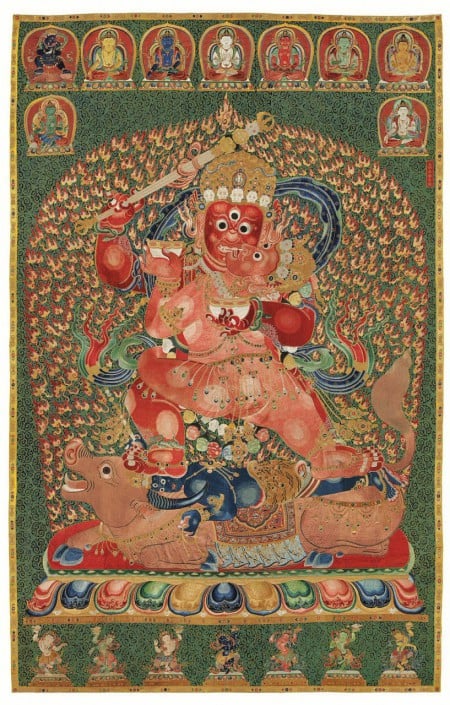Analysis
$45 Million Tapestry Breaks World Record for Chinese Art
Billionaire Liu Yiqian says he's proud to bring the rare "thangka" back to China.

Billionaire Liu Yiqian says he's proud to bring the rare "thangka" back to China.

Henri Neuendorf

A Tibetan ‘thangka’ tapestry sold at Christie’s Hong Kong on Wednesday for HK$348.4 million ($45 million), setting a new world record for a Chinese artwork sold at international auction, SCMP reported.
The Shanghai-based billionaire Liu Yiqian placed the winning bid via telephone, bringing an end to a fierce and protracted bidding war. The work was finally sold for 5 times the pre-sale estimate of HK$80 million ($10 million). The sale breaks the previous record for a Chinese artwork, which Liu also set when he paid HK$281.2 million ($36 million) for a Meiyintang Chenghua ‘chicken cup’ at Sotheby’s in April.
Liu told the SCMP “I am proud to bring back to China this significant and historic 15th century ‘thangka,’ which will be preserved in the Long Museum for years to come,” he said referring to the museum in Pudong that he founded with his wife.
The colorful and intricately woven Buddhist tapestry dates back to the Yongle period of the Ming Dynasty (1402-1424). It measures 3.3m x 2.1m and shows Rakta Yamari, the red conqueror of death and his companion Vajravetali trampling over Yama, the lord of death.
According to Hong Kong antiques dealer Hon Lau “The thangka is a magnificent piece of historical artwork made of top-notch craftsmanship.” Lau explained that the tapestry is one of a series of three, the other two remain in a Tibetan monastery. Furthermore, the imperial Yongle provenance increased its value significantly. “I have had collectors telling me that they wouldn’t trade this even if they were given 10 chicken cups.”
The thangka was sold for $1 million twenty years ago, and in 2002 an American collector paid HK$30 million ($3.8 million) for it. Experts estimate that Buddhist art has been undervalued in the past, which explains the dramatic price increase.
“Buddhist art is widely respected and interest has gone up,” commented Jonathan Stone, chairman and international head of Asian art at Christie’s. “There’s no doubt that its value will go up.”